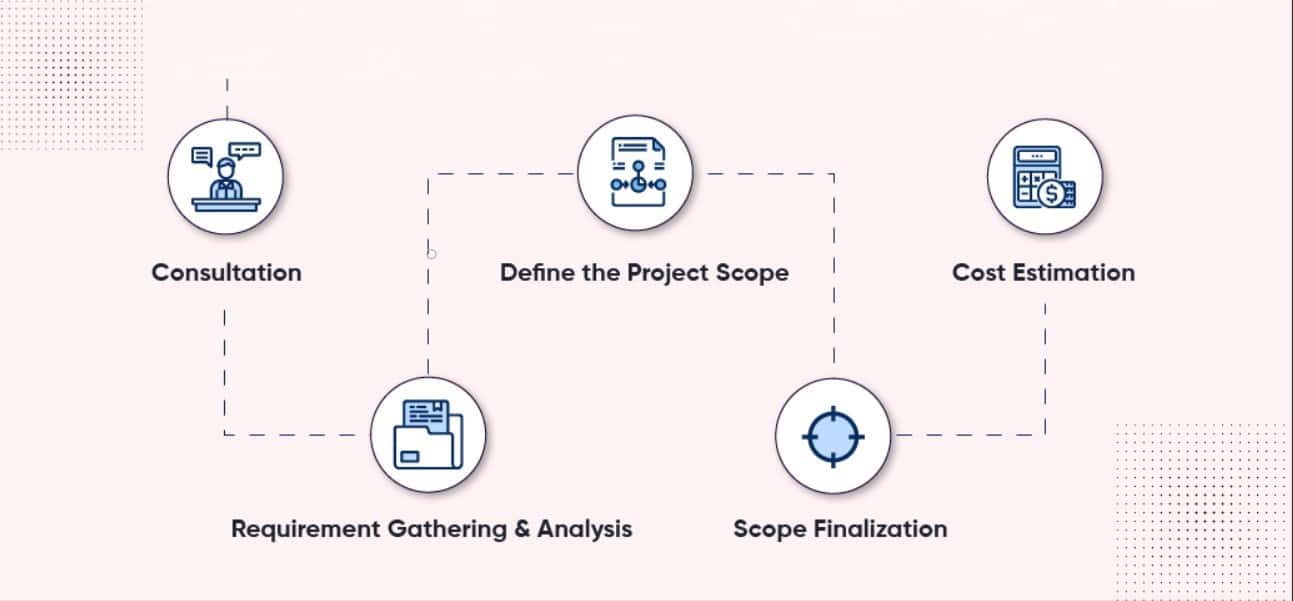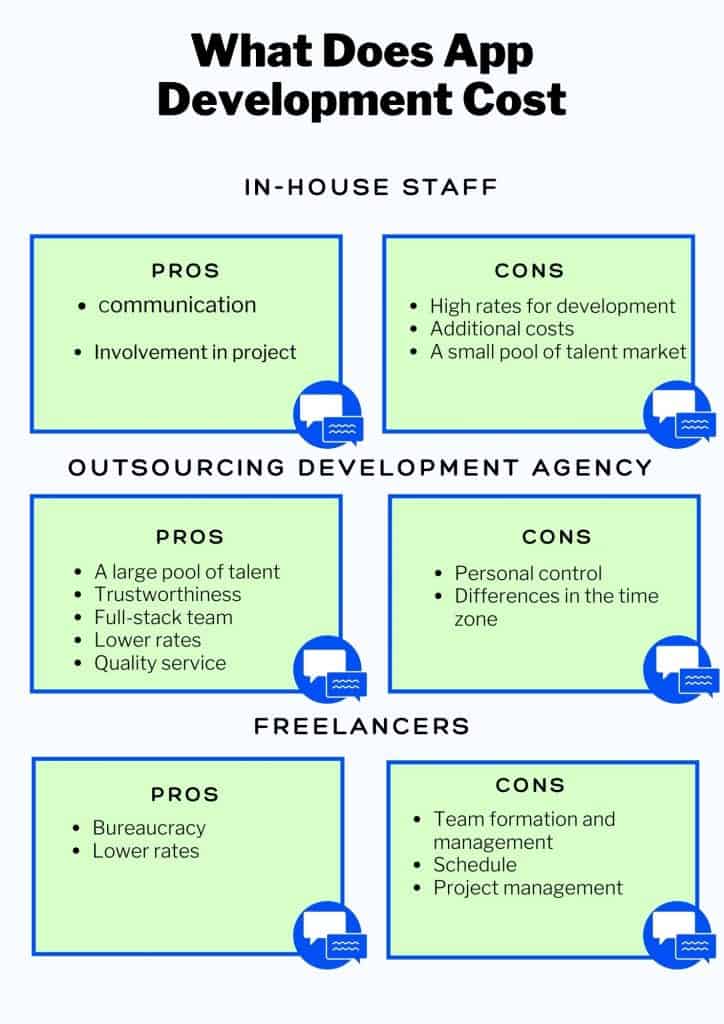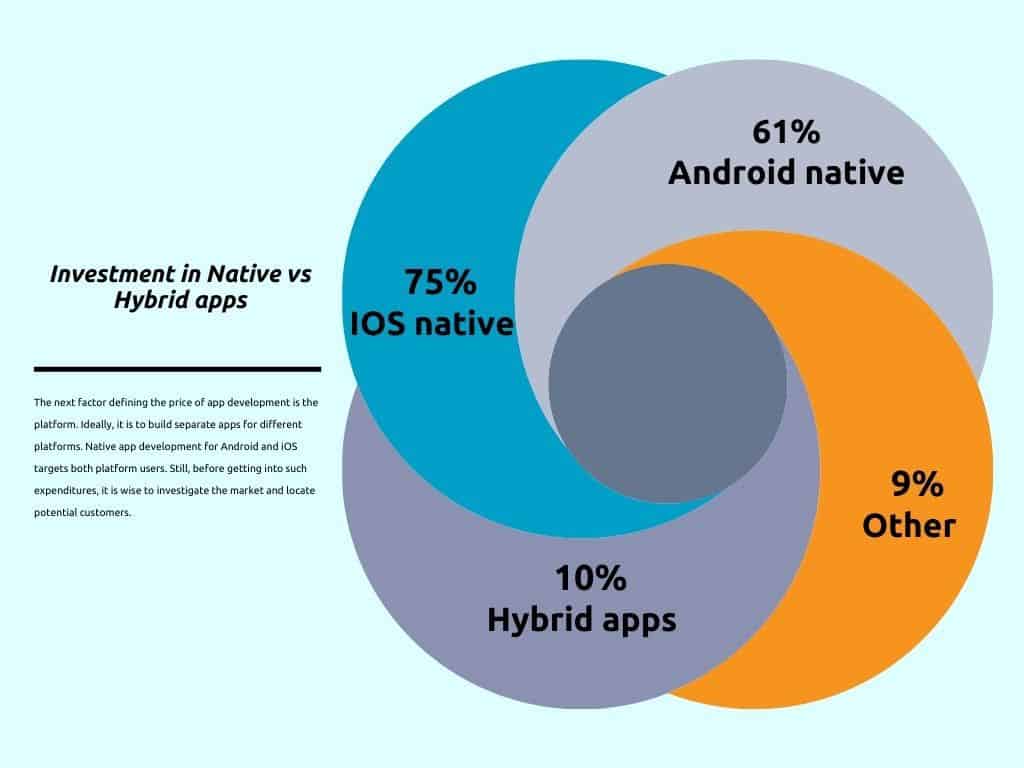Can you imagine your life without a smartphone? We don’t know if that is a good thing or a bad thing, but our life depends on that little gadget. We can pay the bills with a smartphone, hold meetings, and see friends and family members who are a thousand miles away.
For better or worse, we are dependent on mobile apps. With every update, those apps become even more functional, leaving no space for the material world. From the perspective of an average user, mobile apps are great, and that’s the end of the story. Users don’t really care about how an app is created, whether it is a long process, or how much it costs to build an app.
However, the truth is that thousands of aspects and details contribute to the pricing of the application. If your business plan includes the development of a mobile app, it is important to set a budget for development. In this post I will share with you all the details you need to know so that you can easily see how much it would cost you to build an app in 2021. This will help you maximize your profits and avoid any unpleasant surprises.
Defining the App Cost Calculator
The app development price inquiry is one of the most frequently asked questions of development agencies and freelancers. The simple formula of the calculation of app costs is
Project Complexity x Hourly Rates = App Development Cost.
Still, the clients demand to get fixed prices for development. Initially, it should be clear that every single function of the application changes the price. The dialog over defining the price should start with the questions “What do you want?” and “What is your maximum budget?”.
The process of calculating the app development costs goes through stages;
The app cost estimation starts with the consultation. Close communication with the client will help to define the expectations. With the next step, the dev team gathers and analyzes the requirements and defines specifications for UI/UX design. With more specific requirements, it is possible to clarify the project scope and finally get more precise costs for app development.
Each stage is complex, including hours of research, project planning, and analytics. Testing and deployment follow app development: those are two main steps of the process, ensuring smooth operation. In the final stage, the app will get ongoing support and updates to meet end-user requirements.
Getting closer to the cost estimation, it is time to specify the top seven factors defining the app costs:
- App development team
- Features
- Number of platforms
- Complexity of design
- Backend development
- Third-party integration
- Post-launch expenses
Choose Your App Development Team
App development is not a one-day process; it requires professionalism and contribution. The result and costs greatly depend on the dev team you are hiring. Here you also have options.
In-house team. Hiring in-house staff has advantages, especially if you have enough resources to get a full-time development team. It also means costs for infrastructure that will in no way affect the quality of the app.
Outsourcing development agency. Outsourcing a development company with a full staff has become the most efficient option for getting a good quality-price ratio. As a client, you need to share your requirements with the dev team and wait for results.
Freelancers. Hiring freelancers to build a mobile app is another option to consider that has both advantages and disadvantages. For example, although hiring freelancers is cost-efficient, it also requires contribution from the client: recruiting and managing a team, monitoring work, improving productivity, etc.
DIY mobile app development. If none of the above is an option for you, there is another way you can go. You could invest in learning software development and create your mobile app on your own. It doesn’t mean you have to spend years on learning skills. Hundreds of app-building platforms help to build a mobile app with simple steps and without coding. Of course, this option, as well, has its pros …
- Budget-saving
- Time-saving
- Simple maintenance
… and cons
- Limited template designs
- No option to edit the structure
- One platform option
- No possibility for further extensions
- Dependence on app builder platform
Choose the Platform for the App
The next factor defining the price of app development is the platform. The ideal scenario is to build separate apps for different platforms. Native app development for Android and iOS targets both platform users. Still, before getting into such expenditures, it is wise to investigate the market and locate potential customers.
According to Statista, Android OS holds an 87% share worldwide, while iOS has a 13% share. Another research by Statista also shows that iOS still holds down the largest share of the U.S. market. So the choice of a single platform requires in-depth research of the user market.
If you still want to build an app for Android and iOS, a hybrid development technique helps to build a single app for both platforms. At this point you might ask why anyone would choose a native app for two platforms when you can pay for one. The answer is that a native application can be technically superior compared to a hybrid app, thanks to the developers’ higher experience with the given platform.
Prioritize the Features
To define the costs to build an app and reduce time defining project scope, you should proceed with prioritizing minimum viable product (MVP) features in a few steps.
Step 1. Identify the purpose of the app and target potential users.
Step 2. Focus on MVP features by must-have, should-have, could-have, and won’t-have categories. The more features the app has, the higher is the cost of app development.
- Must have – features the app can’t function without
- Should have – features the app can function without
- Could have – “bonus” features
- Won’t have – features that will not add value to the app
By analyzing product features and target audience and finally prioritizing MVP, it is possible to discard all features of little value and stick to killer features that bring value to your app.
Breaking Down Costs by Complexity
The major factors defining the price of the app are features and complexity. Thus, the more features the app has, the higher the price is. App cost estimation proceeds with the choice of app complexity.
- Simple/basic app – 1 platform + basic features. A simple app with basic features may take up to 1,200 hours for development, with an estimated cost of $15,000-$60,000.
- Medium/mid-level app – 1-2 platforms + additional features + complex design. The mid-level app requires more resources for development, with up to 1,800 hours for the development process. Depending on the platform, design, and features, the price may reach up to $95,000.
- Large app – 2 platforms + advanced features + high-level complex design + ongoing support. With ongoing support and updates, the development of a large app may take 3,000 hours and more, with an estimated budget of $100,000-$300,000.
Having a clear idea about the complexity of the app and the associated costs is a definite step forward, bringing you closer to creating a highly profitable app.
Backend Development
The app is not only the design and interface we see but also all the nuts and bolts behind the scenes, i.e, the backend part that manages app users and is run by the web admin.
Simple apps do not require a backend development. The more complex the app is, the more important it is to get the backend part. The app with large information flow synchronized across platforms should have backend server support with a complex structure built in multiple programming languages. Therefore, backend development is another factor defining app cost.
Third-Party Integration
Third-party integration necessity may initially be set or come along during the development process. Such services like SRM or API (Application Program Interfaces) will help build a whole infrastructure to support the application. The integration, testing, and support of third-party APIs will bring additional costs. Moreover, the more APIs are added, the higher is the final cost.
Post-Release Expense
Building a high-level app is one thing, and keeping it functioning is a different story. Those two processes are correlated, and the application cannot “live” without ongoing support. To make the app work, it also requires promotion and effective marketing strategies to get downloads.
Regular app updates, bug fixes, server maintenance, and user support are included in post-release expenses. The calculation of such expenses is done separately, but they are still part of app development. More often, the price for post-release maintenance adds up to about 20% of the final app development cost.
Knowing How To Calculate the Costs of an App Makes You a Better Builder

Decisions about the app features and its overall complexity, as well as factors such as possible backend development or third-party integration, all play a part in determining the overall cost of building an app today.
Moreover, as we saw, decisions regarding the development team also affect the cost. Should you build an app using in-house staff or freelancers? Or should you develop the app yourself? Each option has advantages and disadvantages that you should consider, depending on your individual needs.
The more information you have, the more well prepared you are to assess an offer. These top factors defining the app cost will help you to get the initial outline of the app that will meet your requirements, maximizing your profit.




